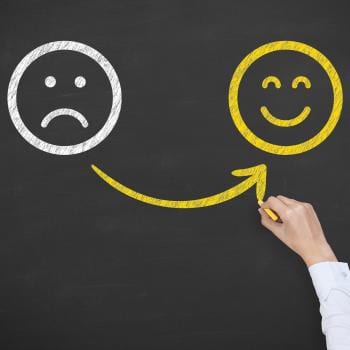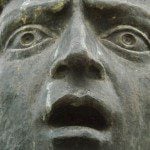 My post on sleep training, learned helplessness and the TOB predictably netted a lot of comments. Many of those comments were not posted because they did not reflect well on the correspondent and I feel strongly that it is my job to protect people’s dignity. I’m happy to publish criticisms, but I won’t post something that I think you’ll regret when you calm down.
My post on sleep training, learned helplessness and the TOB predictably netted a lot of comments. Many of those comments were not posted because they did not reflect well on the correspondent and I feel strongly that it is my job to protect people’s dignity. I’m happy to publish criticisms, but I won’t post something that I think you’ll regret when you calm down.
But some comments were stellar. One exchange I had with Dr. Kathleen Berchelmann was, I felt, worthy of it’s own post. While, as you can see, I disagreed with her comments, I appreciated her points. I hope you enjoy the exchange.
Dear Dr. Popcak,
I want to personally thank you for all your excellent writing. I’ve been a fan of yours from a distance for some time. I promote your work on my blog under “Parenting Resources” at: http://www.catholicpediatrics.com/resources/parenting
In general I am a supporter of most aspects of attachment parenting. I would, however, like to bring to your attention a September, 2012 article from the journal Pediatrics. In case you don’t have access to their full-text articles, here is a popular press summary of the study: http://healthland.time.com/2012/09/10/its-o-k-to-let-babies-cry-it-out-at-bedtime/
I am assuming the study you refer to in your post is the August 2011 study from Early Human Development, “Asynchrony of mother–infant hypothalamic–pituitary–adrenal axis activity following extinction of infant crying responses induced during the transition to sleep.” It’s a very interesting study. I agree that persistently elevated cortisol levels show that there isn’t a lot of “self-soothing” taking place. But I think, as parents and health care professionals, we have to ask ourselves the larger question, “What are the negative consequences of this physiologic sign of persistent stress?”
I feel it is a big jump to equate this persistent rise in cortisol of a baby who cries him or herself to sleep with the learned helplessness of the studies you cite above. The stressors in each case were different. They are not equivalent experiments. There is no data to suggest that babies who “cry it out” have an increase risk of depression or anxiety disorders as you suggest in your second to last paragraph. The Pediatrics study I cite above actually showed the opposite– that babies who “cried it out” did not have increased risk of emotional, psychological, or behavioral disorders at age 6. In fact, babies who were in the control group (not left to “cry it out”) actually had a higher risk of behavior disorders.
Dr. Popcak, I also love Theology of the Body, and as a pediatrician I have found TOB an invaluable tool for teaching healthy sexuality to children and adolescents. Please see my project, Text4RealSex, http://www.Text4RealSex.com. To the best of my knowledge, however, Blessed John Paul II never mentions baby’s crying and sleep patterns in his development of Theology of the Body. When we elaborate on TOB themes and apply them to new situations, as I often do, I think it is important to indicate that these are our thoughts, not JPII’s.
There are many tired parents out there struggling to deal with crying babies. I think we have to be very careful before we lead parents to think that they are causing irreparable harm to their infants or violating the teachings of the Catholic Church.
Thank you for your faithfulness and your beautiful commitment to Catholic parenting and mental health.
Warmest Regards,
Kathleen M. Berchelmann, MD Pediatrician Washington University School of Medicine and St. Louis Children’s Hospital
Dr. Berchelmann,
Thank you for your excellent comments. I appreciate your wisdom and your expertise.
As you know, good vagal tone (note: the vagus nerve resets the stress-out body to a normal unstressed state. “Vagal tone” refers to the efficiency with which the vagus nerve rests the body’s stress signs) is associated with healthy emotional regulation and greater resistance to both depression and anxiety. I’m sure you are also aware that long term cortisol exposure is antithetical to developing good vagal tone.
I want to be clear that I am not saying–as some have accused me in an attempt to exaggerate my point to make it easier to dismiss me–that sleep training causes “brain damage.” (Or, for that matter, as some have accused me of saying, that parents who sleep train are “abusers” or “bad Catholics” or for that mater, that every time a parent sleep-trains a baby, a puppy dies.) What I am saying is that the idea of self-soothing in infancy is a convenient fiction. What is the mechanism or process infants use to self-soothe? How does this magic happen? Everything I know about developmental psychology says that it isn’t possible. Unless someone can show me the process of self-soothing, I have to assume that the idea that babies can self-soothe is wishful thinking at best and junk science at worst. There is just no evidence that it can be done. So, if the baby isn’t self-soothing, what IS happening? Well, the evidence would appear to show that what is happening is learned helplessness. When cortisol levels are elevated for a long-enough period that help seeking behavior is extinguished in the presence sustained stress, that is learned helplessness.
Now, it is a fair question to ask just how damaging this degree of learned helplessness really is, but I don’t think there is a question that it is, indeed, damaging to at least some degree. I don’t know of a single study that suggests learned helplessness is a good thing. How helpless should anyone want to feel?
I appreciate the study you cite, and I have read it before, but to my eyes all it is saying is that sleep training gets babies to sleep and when babies sleep moms and dads are happy. But to go from that to say that sleep training is safe begs the question of how sleep training actually works. What is the mechanism? If the mechanism is self-soothing, then how does that actually happen? If the mechanism is learned helplessness, well then, let’s admit that and deal with the reality of the situation. Maybe a little learned helplessness is a good thing maybe its not, but let’s not be too cowardly to ask the question. Any pharmacologist will tell you that one really can’t say something is safe if one is unwilling to look at the mechanism of action. That is where the study you cite over-reaches. You cannot say something is “safe” if you don’t know how it works.
Likewise, the study indicates that sleep-trained children were easier than children who were not sleep-trained, but if the mechanism of action of sleep-training is learned helplessness, this makes perfect sense. Parents typically report quiet children as better behaved. Children who have learned the pointlessness of crying through sleep-training will be quieter and seen as better behaved by parents. But is a quieter baby really a healthier baby? Or is a quieter baby a depressed baby? We don’t know because the study you cite refuses to look at the mechanism of action behind the efficacy of sleep-training.
Finally, regarding TOB. I don’t believe I claimed JPII wrote anything on sleep training or crying-it-out but don’t make the mistake of thinking that TOB is just about sex. JPII is the father of the theology of the body, but the theology of the body is it’s own theological discipline, like Christology or ecclesiology. Just because JPII didn’t write about it doesn’t mean it isn’t consistent with the principles of the TOB. I am happy to take full credit for being among the first people to apply the principles of TOB to parent-child relationships and family dynamics. That said, in my response to Terri, I referenced the work of Dan Seigel, author of Parenting from the Inside Out and Editor-in-Chief of the Norton Series on Interpersonal Neurobiology. It might interest you to know that JPII was an admirer of Daniel Seigel’s work, and that he brought Dr. Seigel to the Vatican to present on Mother-Infant bonding and the developing brain. There is a great deal of evidence showing that JPII was very interested in understanding the process of attachment and bonding and his interest is reflected in his work on the feminine genius–which is foundational concept of TOB.
In conclusion, I thank you for taking the time to write. I do appreciate and respect both your expertise and your tone and I hope you will be a regular reader/commenter. But until someone can show me how, exactly, an infant self-soothes, I cannot in good conscience do anything but remind people that the idea of self-soothing is a myth and that the mechanism behind sleep-training is, by all indications, learned helplessness. I believe parents should have the right to use it as long as they can give informed consent and they can’t do that if they aren’t told the truth.
May God Bless you abundantly,
Dr. Greg











